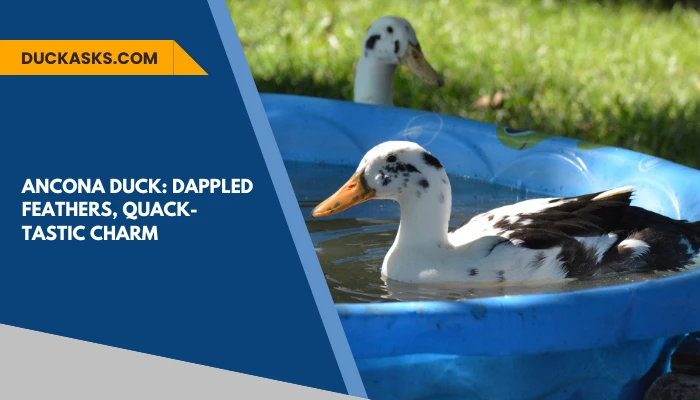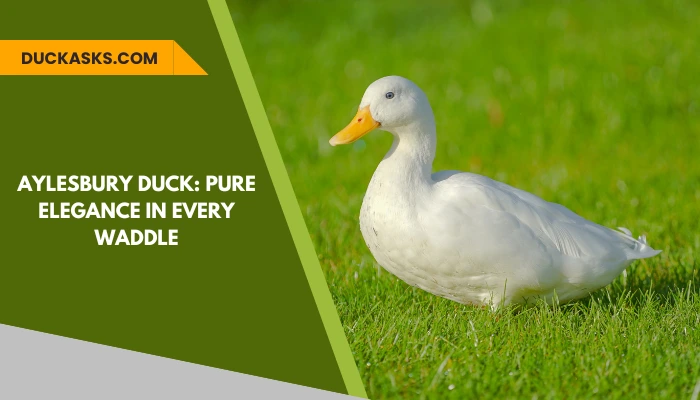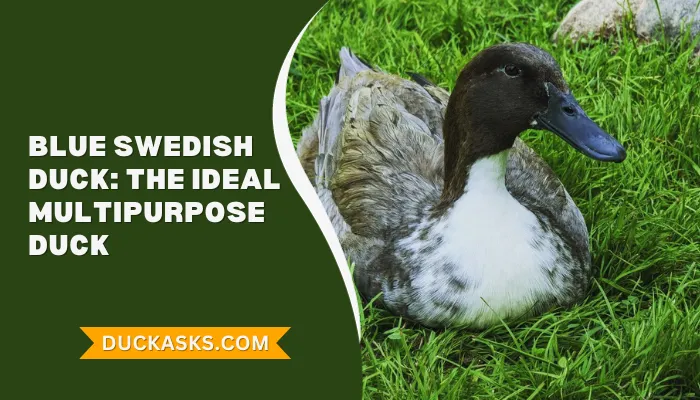Crested Duck: History And Breed Guide
The Crested duck is an eye-catching bird with a captivating crest that gets your attention the first time you see it.
How can these ducks have such a good-looking crest? Well, the answer is more intriguing than it may seem. After all, this crest is the result of a skull deformity.
That’s right. Crested ducks have a mutated gene that creates a skull deformity and forms the crest. And this mutation can be fatal, which is why breeding these ducks is challenging.
But you do not need to worry! In this article, you will learn everything about the Crested duck, how to breed them and what to do to increase their chances of developing a beautiful crest. Continue reading to find out more!
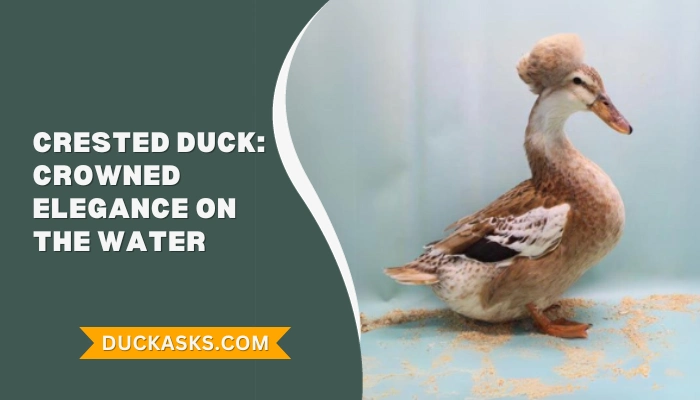
Looking for more articles about duck breed:
Crested Duck Profile
| Name | Crested Duck |
|---|---|
| Scientific Name | Anas Platyrhynchos Domesticus |
| Common Names | Crested Duck, Crested |
| Origin | East Indies |
| Size | Medium |
| Weight | 7 Pounds (Drakes) 6 Pounds (Hens) |
| Lifespan | 8 to 12 Years |
| Feather Color | Blue, Gray, White, or Black |
| Climate Tolerance | Elevated |
| Behavior | Calm but Shy and Nervous |
| Special Features | Crest |
| Breeding and Maintenance | Easy |
| Easy to Keep? | Yes |
| Duck Purpose | Ornamental, Exhibition, Egg Layer |
| Egg Productivity | Moderate |
| Rarity | Low |
Overview of Crested Ducks
The Crested Duck is a captivating duck breed. With a uniquely captivating crest as its most popular trait, this duck is perfect for ornamental, exhibition and decoration purposes.
Still, Crested ducks are also good layers, making them suitable for this purpose as well.
History and Origins of Crested Ducks
The origin of the Crested duck is allegedly in the East Indies, subsequently developed even further in Holland.

While there aren’t many records, this duck breed is visible in art, in pieces painted by Melchior d’Hondecoeter, popularly known as Jan Steen.
It’s a common theory that Dutch ships transported the duck to Europe.
In the United States, one of the earliest records available are documents written by D.J. Browne when he described the Crested ducks in 1853.
Then, the American Standard of Perfection accepted the White Crested in 1874 and the Black Crested in 1977. The United Kingdom recognized this duck breed in 1910.
Crested Duck – The Background
The Crested Duck is a duck native to South America. This duck belongs to the monotypic genus Lophonetta, which covers two subspecies of this bird.
First, there’s the Lophonetta s. alticola, occurring between 2500 and 4800m from Peru to Chile.
Lophonetta s. specularioides, occurring in the south regions of the Andes, close to the Patagonia and Falkland islands under 1500m.
Typically, the Crested Duck populates the Andes Mountains and regions with high elevations. While both males and females have similar plumage, the color of the males is more prominent.
One interesting fact about the Crested Duck is the origin of its appearance.
The crest is the result of heterozygous generated by a genetic mutation that deforms its skull. Yes, that’s exactly what it means.
This duck has a crest because of a skull deformity, and the chances of breeding Mallard ducks with crests is one in a million.
Physical Characteristics and Features
The Crested duck is a duck of medium size with long, arched necks and prominent breasts. Generally, the male Crested weighs 7 pounds, whereas the females weigh 6 pounds.
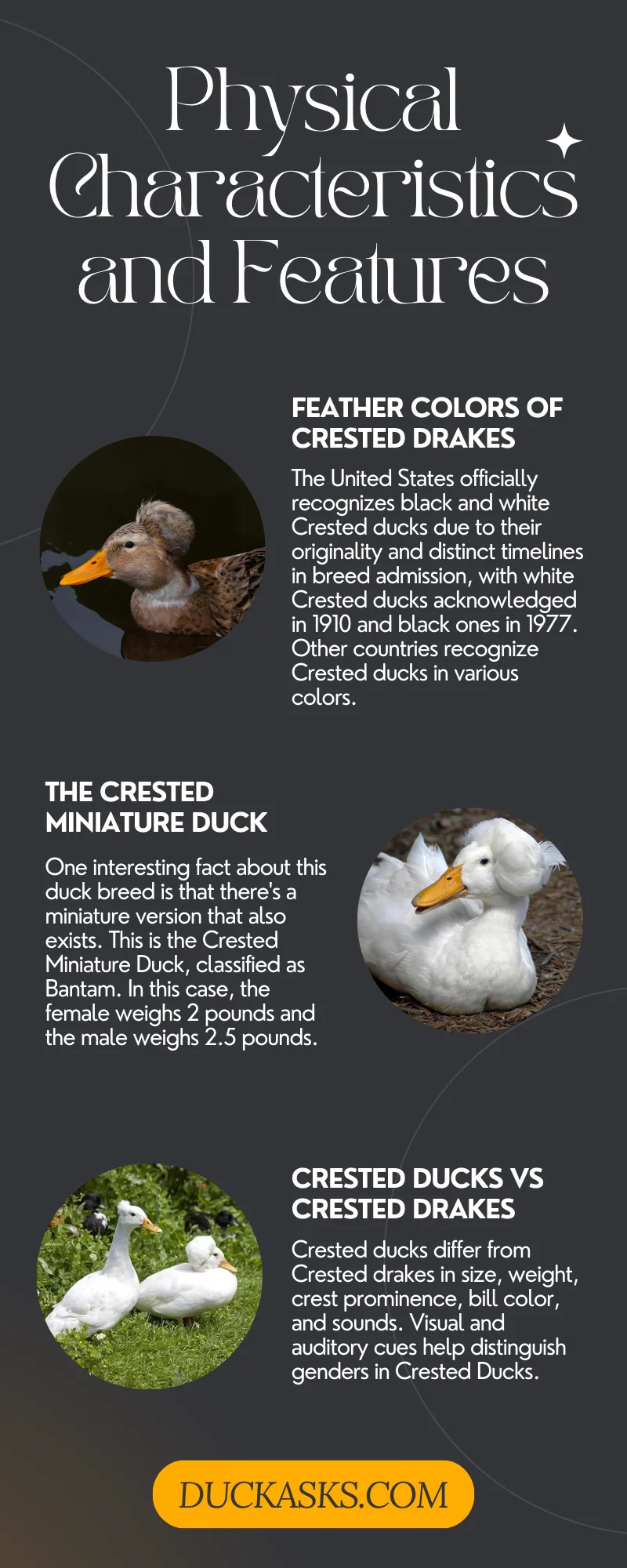
Undoubtedly, the crest is the most recognizable trait of this duck. This crest can be of different sizes, from really smart to lengthier.
Feather Colors
This duck breed can be of any color, but the United States only recognizes the black and white ducks as part of the breed.
But why do they only recognize only two of them and not others?
The answer is originality.
As you are already aware that the crest is the result of mutation of crossbreeding and many different countries are successfully breeding crested duck of different species and color.
So, which one is American? The white and the black crested ones. This selection is a result of distinct timelines in breed admission.
The white Crested ducks were the first to earn their place in the American Standard of Perfection back in 1910. Meanwhile, the black Crested ducks had to wait until 1977 to gain official recognition.
In the United Kingdom and other countries from Europe, authorities recognize as Crested any ducks with blue, gray, white, or black feathers.
| Characteristic | Description |
|---|---|
| Size | Medium-sized |
| Height (size) | Average |
| Weight | Drake: 3.2 kg, Duck: 2.7 kg |
| Legs | Hardy and long |
| Heads | Drakes: Large, round heads, Hens: Similar but smaller |
| Bills | Jet black, pale orange |
| Eyes | Black, red, brown |
| Colors | Blue, Gray, White, or Black |
| Personality Traits | Social, friendly, docile |
| Purposes | Egg and meat production, pet |
| Incubation Period | 28 days |
| Lifespan | 8-12 Years |
The Crested Miniature Duck
One interesting fact about this duck breed is that there’s a miniature version that also exists.
This is the Crested Miniature Duck, classified as Bantam. In this case, the female weighs 2 pounds and the male weighs 2.5 pounds.
Differences Between Crested Ducks and Crested Drakes
Crested ducks have a few differences compared to the Crested drakes. For example, the Crested ducks are smaller and usually weigh less than the drakes. Also, the crest on the drakes is more prominent.
There’s more, have a look –
| Characteristics | Crested Drake | Crested Duck |
|---|---|---|
| Weight | 3.2 kg | 2.7 kg |
| Feather Color | Pinkish color near the tip of the bill | Long and pale orange beak and legs for white crested duck, dark gray color beaks and legs for silver Appleyard crested duck |
| Special Features | Greatly elongated tail feathers, pinkish color near the tip of the bill | Thick head crest, which looks like an afro |
| Bills | Jet black | Long and pale orange beak and legs for white crested duck, dark gray color beaks and legs for silver Appleyard crested duck |
| Sound | Males sound raspy and are much quieter, almost sounding like a wheezing or a whisper. | Females are much louder than males and have a very clear, distinctive quack |
| Feathers | Bright red irises that are surrounded by dark brown plumage | No significant difference |
| Flight | Spectacular white speculum with a thin line of black plumage surrounding it | No significant difference |
| Upper WinG | Dark-colored bill and brownish color, with the head showing a darker eye-stripe and a paler area near the base of the bill | No information available |
| Crest | Long and mostly on the back of its head, and is an extremely light brown | Thick head crest, which looks like an afro |
How Can You Tell If a Crested Duck Is Male or Female?
If you’re still confused, then you can use the following little characteristics to distinguish between male and female Crested Ducks. This can be done through several visual and auditory cues –
- Feathers: Male ducks often have more colorful plumage than females, but in Crested ducks, the officially recognized varieties are white and black.
- Bills: Females may have speckled bills, which can help in identification.
- Tail Feathers: Male ducks might display a curled tail feather, a feature less common in females.
- Sounds: Listen to their quacks. Females have clear and loud quacks, while males produce quieter, raspy, or whisper-like sounds.
These cues provide insights into the gender of Crested Ducks, making it an interesting aspect of duck observation.
Behavior and Traits of Crested Ducks
The Crested duck is a very social bird, getting along well with adults, kids and other ducks. For this reason, they can integrate well into new environments and flocks.
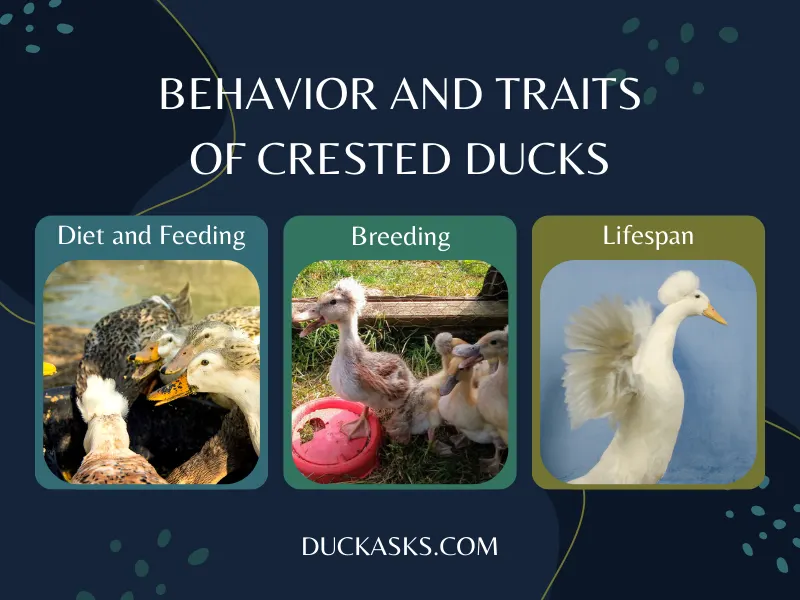
These ducks won’t be annoying either. While they can be nervous and get scared easily, they don’t make loud noises.
Diet and Feeding
You must feed the ducks proper nutritional food to ensure their healthy growth. Ducklings require starter feed during the first couple of weeks and move on to commercial duck feed once they reach maturity.
The duckling starter feed must provide 18% to 19% protein content, whereas the adult feed must have at least 14% protein.
Additionally, you must allow the ducks to roam freely to explore the area and find other food. Typically, these ducks consume insects, plants and seeds.
As a last recommendation, make sure there’s always a water bowl or water source nearby.
The ducks will need to drink water while eating to avoid choking and they also use the water to wash their plumage and moisturize their eyes.
Breeding
Crested ducks reach maturity fast, as the hens develop the capacity to lay eggs at five or six months old. Even if the ducks are lightweight, the eggs weigh 80 to 90 grams.
They will continue to lay eggs even during winter, which makes them reliable egg layers. After laying the eggs, these will take 28 days to hatch.
Lifespan
The Crested duck can live from 8 to 12 years. Fortunately, this duck breed is hardy and can withstand rough weather conditions. Still, protection is necessary to ensure predators won’t put the ducks at risk.
Breeding and Raising
The Crested duck is a fascinating breed with plenty of risks that you should know before deciding to raise it. Check out this information to increase your odds of breeding these ducks successfully.

Some Tips and Considerations for Successful Breeding
- If you’re new to breeding ducks, you should be ready to face complications. For example, roughly 25% of the embryos won’t develop, and some offspring could have twisted necks or other flaws.
- The preferred method to breed Crested ducks is by mating a Crested duck with a regular duck. Chances are the offspring will have a crest and the risks will be fewer.
- Female Crested ducks don’t go broody often. Therefore, you may want to invest in an incubator to increase the likelihood of hatching the eggs successfully.
- Don’t waste time waiting to see if the offspring will have a crest. If the duckling doesn’t have a crest from birth, it will not grow one over time. This mutation will be present since birth.
Housing Requirements
The preferred shelter for Crested ducks is a coop. Within this structure, the ducks will be safe from wind, rain and potential predators.
In any case, setting up a fence around the perimeter should also be a consideration. Likewise, provide straw or similar materials to help them build a nest.
This coop must have plenty of space, approximately three or four square feet of floor area per duck. Similarly, proper ventilation and dry bedding are also crucial to keep the ducks comfortable. As a bonus, you can consider building a small pond to entertain the ducks.
The Egg Productivity of Crested Ducks
This duck breed can lay between 100 and 130 eggs yearly, with some hens laying around 200 sometimes. Typically, the ducks lay this number of eggs in clutches of 9 to 13.

The eggs are large and can be white, green, blue, or tinted. They offer rich yolks for general use and baked goods.
Considered to provide more protein than most duck eggs, the Crested duck egg is a good source of nutrients with good looks.
The Meat Quality and Popularity of Crested Ducks
The Crested duck can produce quality meat, but this duck does not have plenty of meat gain. For this reason, this breed is not the most suitable for meat productivity.
This is because the duck is lightweight and not worth the trouble for the meat you get. But, if you do raise Crested ducks for meat, expect to harvest delicious breasts with low-fat content.
There’s a tasty tenderness and rich flavor, making this duck suitable for most recipes. The ducks also grow fast (8-10 weeks), meaning you don’t have to invest plenty of time before it is ready.
Frequently Asked Questions
- What does it mean if a duck is crested?
Crested duck is a breed of ducks with a crest on the back of their heads. This crest is the result of a mutated gene, which is often fatal for the ducks. It creates a gap in the skull of the embryo, typically leading to skull deformities.
- Can female ducks be crested?
Yes, the female Crested duck can have a crest too. However, the crest on the female is less prominent than on the male.
- What is a small-crested duck called?
The small crested duck is called the Crested Miniature Duck. This breed is the result of mating Crested ducks with the Miniature Appleyard and Calls.
Key Takeaways
The Crested duck is fascinating. Due to its complexity, successfully breeding these ducks can be quite challenging. Nonetheless, the information found here will allow you to increase your opportunities to work with these ducks and have more success in your projects.
Whether for exhibition or egg productivity, the Crested ducks have a lot to offer. Found this article interesting? Don’t forget to check our socials on Twitter, Facebook and Pinterest to stay in touch!
We regularly publish fascinating articles about ducks and birds! Come and join our community as we discover more and more about this wonderful world.
REFERENCES:
- https://domestic-waterfowl.co.uk/crested.html
- https://www.omlet.co.uk/breeds/ducks/crested_ducks/
Image Credits:
- https://www.facebook.com/IncubatorsMalawi
- https://www.shutterstock.com/photos


